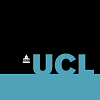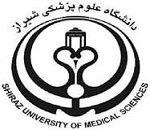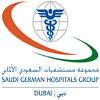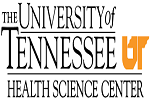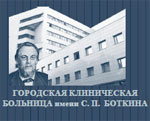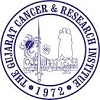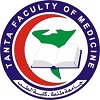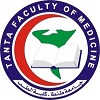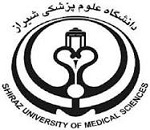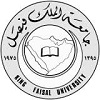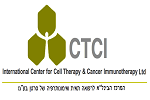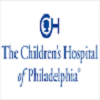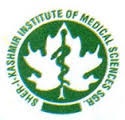Day :
- Blood Malignancies
Leukemia
Session Introduction
John Batchelor
Central Manchester Foundation Trust,United Kingdom
Title: The pathogenesis of spontaneous intrcranial haemorrhage in patients with haematological malignancy

Biography:
John Batchelor is currently Consultant in Emergency Medicine at Central Manchester Foundation Trust, England UK. He is also Honorary Lecturer at Manchester Metropolitan University. He graduated from Leeds University England, in 1982. He is a Fellow of the Royal College of Surgeons of Ireland and Fellow of the Faculty of Emergency Medicine of England. He undertook his MD thesis at University College London. He has written extensively on the subject of minor head injuries. He has presented a paper in Paris in 2012 on a Meta-analysis looking at the relationship between cerebral microbleeds and antiplatelet agents. He has also recently published a meta-analysis on the effect on mortality of platelet transfusions in adults with spontaneous or traumatic antiplatelet associated intracranial haemorrhage. His current research interest lies in the area of risk factors for intracranial haemorrhage in both adults and paediatrics secondary to coagulopathy and thrombocytopenia.
Abstract:
Spontaneous intracranial haemorrhage is a well recognised complication in patients with haematological disease. Intracranial haemorrhage is the second leading cuase of death in patients with acute myeliod leukaemia. The reported mortality is over 50% for patients with haematological malignancy and spontaneous intracranial haemorrhage. The reported incidence of spontaneous intracranial haemorrhage appears to be slightly higher in acute myeliod leukaemia (AML) and chronic myeloid leukaemia in blast crisis than in other forms of haemalogical malignancy. The distribution of ICH is as follows:- intraparenchymal haemorrhage accounts for about 60% of the reported case series. The remaining sites are distributed between the cerebellum, brainstem, basal ganlia, subarachnoid, subdural, intraventricular and epidural regions. Over 50% of patients will having more than one intracranial bleeding site on CT. Previously proposed risk factors for spontaneous intracranial bleeding include: direct invasion by tumour cells, invasive intracranial sepsis, hyperleukocytosis, and coagulopathy. Abnormalities of clotting include DIC, thrombocytopenia and pronlonged prothrombin time. Coagulopathy and thrombocytopenia are probably not the main factors reponsible for spontaneous intracranial haemorrhage in view of the fact that neither platelets nor clotting factors are responsible for maintianing cerebral vessel integrity under normal physiological conditions. Cohort studies from patients with idiopathic thrombocytopenia have shown a poor correlation between platelet count and the risk of spontaneous intracranial haemorrhage in both adults and children. Batchelor (2015) has shown that coagulopathy in patients with traumatic intracranial bleeding increases the risk of progressive haematoma progression by an odds ratio of 6.176 (95% CI: 4.727 – 8.069). This paper aims to explore other factors which may account for spontaneous ICH in patients with haematological malignancy .
Jean Jacques Fournie
Cancer Research Center of Toulouse,France
Title: Stratifying patients for Immune checkpoint blockade cancer therapies

Biography:
Jean Jacques Fournié completed his PhD (Biochemistry and Immunology) from Toulouse University and a Post-doctoral stay at the Clinical Immunology Research Center of University of Sydney, Australia. He is the Founding Director of Cancer Research Center of Toulouse, an international cancer research laboratory from INSERM, University of Toulouse 3 and CNRS, and leads the research team ‘Innovating Therapeutics Strategies in Lymphomas’ of Laboratoire d’Excellence Toulouse Cancer at Institut Universitaire du Cancer of Toulouse-Oncopole, France. He published more than 150 papers in reputed journals, produced 21 patents and co-founded the Innate Pharma Company (www.innate-pharma.com).
Abstract:
Non-Hodgkin’s B-cell lymphomas (B-NHL) are aggressive lymphoid malignancies which develop in patients due to oncogenic activation, chemo-resistance and immune evasion. Tumor biopsies show that B-NHL frequently deploys several immune escape strategies, a problem for the development of checkpoint blockade immunotherapies in these diseases. In particular, there are currently no means to identify those B-NHL patients most likely to respond to the new therapeutic antibodies. Meta-analysis of large series of microarrays from B-NHL biopsies is necessary to assess their immuno-edition, but material (single datasets) and methods to do this are currently lacking. This talk will present a new data mining strategy to do so, and their results in large cohorts of ~1500 patients with B-NHL. This approach was validated by producing scores fully matched to phenotypic hallmarks of B-NHL. Then, immune escape in patients was investigated by this method, and revealed a significant immune escape in most samples of DLBCL and FL, but fewer in MCL and MZL. Both gene expression patterns and overall survival data evidence four stages of cancer immuno-editing in B-NHL: • Non-immunogenic tumors (stage 1) • Immunogenic tumors without immune escape (stage 2) • Immunogenic tumors with immunoescape (stage 3) • Fully immunoedited tumors (stage 4) Scores characterizing immunoescape stages 3 and 4 (76% of FL and DLBCL samples in the dataset) identify those B-NHL patients relevant for immune checkpoint blockade therapeutics. Beyond, the consequences of these findings will be discussed in the more general context of molecular profilings for cancer treatment.
Slobodanka Ostojic Kolonic
Clinical Hospital Merkur,Europe
Title: Rituximab maintenance in follicular lymphoma

Biography:
Slobodanka Ostojic Kolonic is a Professor of Internal Medicine at the School of Medicine of University of Zagreb, Croatia. She is an attending physician in Internal Medicine and Hematology at Clinical Hospital Merkur and Head of the Internal Medicine Department since 2011. She is the President of the myelodysplastic syndrome working group as part of Croatian Cooperative Group for Hematologic Diseases (KROHEM). Her research and interest is focused on lymphoproliferative disorders, myelodysplastic syndrome, chronic leukemias and multiple myeloma. She has given numerous invited lectures at domestic and international meetings, has authored many scientific papers in peer-reviewed journals, and the author of several chapters in internal medicine, pharmacology and oncology medical textbooks
Abstract:
Follicular lymphoma is an indolent B-cell malignancy which represents 15 to 20% of newly diagnosed non-Hodgkin lymphomas. Therapeutic options for patients with untreated FL include observation for asymptomatic and low tumor burden and multiagent chemotherapy for symptomatic and high tumor burden patients. Despite slow growth and high initial response rate, many patients experience disease progression and relapse. Rituximab has significantly improved the outcomes of patients with B-cell lymphomas, as well as in patients with advanced FL. Results of randomized studies have shown that the combination of the anti-CD20 monoclonal antibody rituximab with various chemotherapy regimens, can improve patients' overall survival and progression free survival. Maintenance therapy with rituximab in patients with any previous induction therapy improves progression free survival and statistically significant survival benefit for patients with advanced disease. There have been several reports that demonstrated similar benefits for FL patients who received rituximab maintenance every 2 or every 3 months for 2 years. Most of patients had beneficial effect by prolonging response duration in first remission and in case of recurrent disease. In low tumor burden FL patients, there have been no survival benefit and no changing the natural course of disease if rituximab was given as an induction therapy. In conclusion, maintenance therapy with rituximab is efficacious in advanced stage FL patients, with significant benefit in PFS and OS.
Ashutosh Wechalekar
University College London ,UK
Title: Systemic AL amyloidosis - novel approaches to treatment

Biography:
Ashutosh Wechalekar is a Reader in Haematology and Medicine at University College London. He is a Consultant Haematologist at University College London Hospitals and the Royal Free London NHS Foundation Trust. He was trained in Haematology in UK and Canada. His clinical and academic interests are focused on amyloidosis and multiple myeloma. He is one of the world leaders in systemic amyloidosis; in particular AL amyloidosis. His work has defined this disease in a prognostic way and shaped the treatment algorithms. He is interested in characterization and treatment of systemic AL amyloidosis, and runs the national trials in AL amyloidosis. He has interest in multiple myeloma particularly with renal impairment and is involved in clinical trials of new and novel agents in these disorders.
Abstract:
Light chain (AL) amyloidosis is a rare but increasingly recognized complex disorder. It is a consequence of tissue deposition of misfolded monoclonal immunoglobulin light chains protein which forms amyloid fibrils. Most patients have an underlying plasma cell dyscrasia and a small proportion have a lymphoplasmacytic lymphoma. The clinical features are determined by the organs affected by the tissue amyloid deposition. The main organs affected by systemic AL amylolidosis are heart, kidneys, liver, peripheral/autonomic neuropathy and soft tissues. The diagnosis is made by histological demonstration of amyloid deposition on a tissue biopsy (or abdominal fat aspirate) by Congo red staining followed by amyloid fibril typing by immunohistochemistry or mass spectrometry. This is followed by assessing the extent of organ damage (particularly cardiac) to decide a risk stratified approach to treatment. There have been exciting advances in treatment with improvement in survival from 2 years to over 5 years. Baseline therapy is risk stratified. Autologous stem cell transplant is considered for selected fit patients. Most patients treated with it are assessed at baseline, weighing the reversible or non-reversible contraindications, toxicity of treatment and chemotherapy alternatives available. Chemotherapy typically involves a proteasome inhibitor based approach (CyBorD is the commonest front line regime used). Other options include melphalan, thalidomide, lenalidomide, bendamustine in combination with dexamethasone. Attaining a very good partial response or better is the treatment goal. Novel anti-amyloid therapies using small molecules and monoclonal antibodies are in advanced phase trials offering hope of rapid organ improvement. The prognosis of AL amyloidosis has improved from a median survival of ~2 years in the early part of the last decade to over 5 years but high early cardiac mortality still remains problematic. Early diagnosis coupled with use of highly effective chemotherapy regimens and the availability of novel anti-amyloid agents has changed natural history of this disease.

Biography:
Michael Keng received his BS and MD degrees from Michigan State University in East Lansing, Michigan. He completed his Internal Medicine residency at University of Southern California in Los Angeles, California, and Hematology and Medical Oncology fellowship at the Cleveland Clinic in Cleveland, Ohio. He then joined the University of Virginia (Charlottesville, Virginia) in 2014. He currently holds a faculty appointment in Medicine in the Division of Hematology/Oncology at University of Virginia. His clinical areas of interest are focused on clinical trials in hematologic malignancies, including myelodysplastic syndromes, leukemia, and other myeloid malignancies and bone marrow failures. He has a special interest in treating the elderly population, determining optimal combinations and timing of targeted agents, and studying patient safety and quality improvement
Abstract:
Acute myeloid leukemia (AML) is the most common acute leukemia, a disease primarily seen in the elderly with a median age of 67 years. Since the 1970s, treatment with cytarabine and an anthracycline in a “7+3” manner has remained the foundation of curative intent therapy for AML. However, only one-third of patients defined as “old” receive this definitive AML therapy due to concerns of overall performance status and potential treatment-related mortality. Recent data have shown that older AML patients both can tolerate and survive longer than those untreated. A wide spectrum of treatment options is available for elderly AML patients: Intensive chemotherapy, hypomethylating agents, low-dose cytarabine, investigational agents, and supportive care with hydroxyurea and transfusions. There has been great debate regarding the assessment of fitness for chemotherapy and selection of appropriate treatment regimens. Due to diversity of the geriatric patient population and heterogeneity of AML disease, treatment of elderly AML patients to maximize both quantity and quality of life remain challenging and controversial.
Malak Yahia Qattan
King Saud University, KSA
Title: Stem cells microenvironment and its effects on leukemia treatment
Biography:
Malak Yahia Qattan has completed her PhD in Leukemia and Stem Cells Research in 2014 from University of Manchester, UK. She is a Vice Director of Health Sciences Department in King Saud University, Riyadh. Her research focuses on the investigation of mechanisms of gene regulation and cancer biology research. Her long term interests are in investigating the mechanisms by which clinically relevant drugs mediate their therapeutic effects in order to improve available treatments and to develop novel pharmacologically beneficial approaches.
Abstract:
Although the survival rates of 80% in Acute Lymphocytic Leukemia (ALL) are remarkable achievement, the 20% of affected children are facing the risk of death and toxicity of the treatment is significant. The drugs used in ALL are anthracyclines and steroids. The exact mechanisms of action of those drugs are not well understood and significant proportion of children develops drug resistance. Moreover, it has recently been described that microenvironment can also contribute to leukemia cell survival and protect leukemia cells from the cytotoxic effect of drugs. Increased understanding of the mechanisms that lead to 80% curable rate will help bring curable rate to this level in other cancer types as well. So the research aimed to better understand of the role played by Glucocorticoid Receptor (GR) in improving the treatment and the role of bone marrow environment in inducing resistance. We have used ALL cell lines in the absence and presence of conditioned media (CM) obtained from bone marrow cells thus mimicking clinical settings. Our results demonstrate possibility of alternative pathways being utilized for apoptosis when both drugs are used. Furthermore, data indicates that Glucocorticoids (GC) induces autophagy as well as apoptosis in leukemia cells. In addition, Receptor Interacting Protein 1(RIP-1) is significantly repressed in cells grown in CM media and it has been linked to not only apoptosis, but also with other forms of cells death including autophagy and necroptosis. That may highlight new targets of glucocorticoids and open new therapeutic possibilities.
- Myeloma
Myelodysplastic Syndrome
Childhood Hematological Cancers
Session Introduction
Inga Mandac Rogulj
Clinical Hospital Merkur,Europe
Title: Management of higher risk myelodysplastic syndrome

Biography:
Inga Mandac Rogulj is attending physician in internal medicine and hematology at Clinical Hospital Merkur in Zagreb, Croatia. She graduaded from School of Medicine at the University of Zagreb in 2004., and in 2006. joined the clinical faculty in the Division of Hematology at Clinical Hospital Merkur where she continues her clinical practice. Her research and interest is focused on lymphoproliferative disorders, myelodysplastic syndrome, chronic leukemias and multiple myeloma. Dr Mandac Rogulj has given invited lectures at domestic and international meetings and has authored several abstracts and scientific papers in peer-reviewed journals.
Abstract:
Higher risk myelodysplastic syndromes (MDS) include patients in the Intermediate-2 and high-risk categories of the International Prognostic Scoring System and are associated with excess blasts, poor-risk cytogenetics and multiple cytopenias. Survival in untreated higher-risk MDS patients is 6 months following diagnosis, and for that reason the goal of therapy is to prolong survival and delay progression to acute myeloid leukemia. At present time, different guidelines recommend initial treatment with one of the hypomethylating agents (HMA), azacitidine or decitabine. Only azacitidine has been shown to prolong survival in comparison to conventional care regimens, but results have shown that the median survival advantage is only 9,5 months. Among patients with initial responses to HMAs, the median response duration is 9-15 months. Many data indicate that as many as 40% of patients do not respond to treatment or subsequently relapse. After HMA failure, no standard of care has been defined, and many combination treatment strategies have shown variety results. Suggested treatment options for HMA failure include allogeneic stem cell transplantation (in case of eligible patient), addition of other drugs to HMA, enrollment in clinical trials if available or best supportive care. Patients who progress to AML should be offered intensive chemotherapy, but data suggest poor response rates. Allogeneic SCT is the only treatment option with a possibility of cure in front line or for relapsed/refractory HR-MDS suitable patients . In conclusion, HR-MDS patients who face a poor prognosis, need new treatment options to improve their outcomes.
Lamya Mohamed Ibrahim
Advanced Center For Daycare Surgery, UAE
Title: Association of MDR1 Gene Polymorphism (G2677T) with Imatinib Response in Egyptian Chronic Myeloid Leukemia patients

Biography:
Lamya Mohamed Ibrahim completed her doctorate in clinical pathology and hematology at Mansoura faculty of medicine, Egypt in 2010. She joined the clinical pathology department from 2000 till now, promoted from assistant lecturer to lecturer and finally Assistant professor. She published regularly in international and national journals with about publications. She is also working as a reviewer of many peer- reviewed medical journals. Dr. Lamia Ibrahim also contributed and presented her work to many international conferences such as European Hematology Association 2014. She is also a member of many organizations such as European Hematology Association (EHA), American Hematology Association (ASH), Emirates Medical Hematology Association (EMHA), Egyptian Society of Hematology (ESH), Egyptian Society of Laboratory Medicine (ESLM), and Pan- Arab Hematology Associations.
Abstract:
Despite the excellent efficacy results of IM treatment in CML patients, resistance to IM has emerged as a significant problem. Genetic variations in genes involved in drug transportation might influence the pharmacokinetic and metabolism of IM. The genotype of a patient is increasingly recognized in influencing the response to the treatment. The aim of this study was to investigate the genotype frequencies of SNPs G2677T in CML patients undergoing IM treatment and to determine whether different genotype pattern of these SNPs have any influence in mediating good response and resistance to IM. A total of 96 CML and 30 control samples were analyzed for MDR1 gene (G2677T) polymorphism using PCR- RFLP technique. Genotype distribution revealed increase in GG, GT (34.4%, 46.9%) and significant decrease in TT (18.8%) genotype frequencies in CML patients compared to controls(p=0.257, 0.326, 0.017 respectively). Patients in accelerated and blastic phases had higher GT genotype frequency compared to patients in early phases (p<0.001). The resistance incidence correlated with G allele. GG and GT genotypes were higher in CML patients showing imatinib resistance compared to sensitive CML patients (P = 0.893, 0.002). Meanwhile TT genotype was shown significantly to be higher among imatinib sensitive group with (p<0.001). GT genotype was found to be a significant predictor of IM resistance risk (p=0.002). GG genotype was not proved to be significant indicator of resistance risk (p=0.893). On the other hand, TT may be a protective factor against imatinib resistance in CML patients (P<0.001). Determination of G2677T MDR1 polymorphisms might be useful in response prediction to therapy with Imatinib in patients with CML.
Chhaya Rani Shevra
MLB Medical College,India
Title: Recent advances in the diagnosis of multiple myeloma

Biography:
Chhaya Rani Shevra is an Assistant Professor at MLB Medical College and have Published many papers in many reputed journals.
Abstract:
Multiple myeloma (MM) is a malignant tumor of plasma cells. It accounts for 1% of all cancer death in Western countries. Clinically it is characterized by severe bone pain, spontaneous fractures due to lysis of bone, which give rise to spinal cord compression, bone pain, numbness, weakness and paraplegia. Besides this patients may manifests with symptoms related to hypercalcemia, and hyperviscosity syndrome,renal failure and infection. Most of these symptoms are due to monoclonal protein in serum and urine. It is predominantly a disease of seventh and eighth decades, but 7.86% cases can be seen under 40 years of age. The disease is diagnosed with serum or urine protein electrophoresis or immunofixation and bone marrow aspirate analysis. Skeletal radiographs are important in staging multiple myeloma and revealing lytic lesions, vertebral compression fractures, and osteoporosis. Magnetic resonance imaging and positron emission tomography or computed tomography are emerging as useful tools in the evaluation of Patients with myeloma; The differentialdiagnosis of monoclonal gammopathies includes monoclonal gammopathy of uncertain significance, smoldering (asymptomatic) and symptomatic multiple myeloma, amyloidosis, B-cell non-Hodgkin lymphoma, Waldenström macroglobulinemia, and rare plasma cell leukemia and heavy chain diseases. Five-year survival rates approach 33 percent, and the median survival rate is 33 months. Resent research have implicated that there is a cytokine network in the pathogenesis of MM especially in bony lesions, which are the predominant features of plasma cell dyscrasia.
Amani Mahbub
Umm Al Qura University,Saudi Arabia
Title: Polyphenols Act Synergistically with Doxorubicin and Etoposide in leukaemia cell lines

Biography:
Amani Mahbub has completed M.Sc. in Biomedical Basis of Disease in 2010 and PhD in Anti-Cancer Potential of Polyphenols in Treatment of Leukemia in 2015 at the Sheffield Hallam University of Biomedical Research Centre – Cancer Research, Sheffield, UK. She has been interested in investigating the biological effects of a number of nutraceutical compounds such as polyphenols alone and in combination with chemotherapies on the induction of apoptosis, reduced cell proliferation and signalling pathways that involved in the pathogenesis of leukaemias. She also has four published papers in the Journal of Pathology (2012), the Journal of Anti-cancer Agents in Medicinal Chemistry (2013) and recently two in Nature (2015). In addition, she was awarded, the Alastair Currie prize for the best poster presentation at the Pathological Society of Great Britain & Ireland Conference in 2012, Sheffield, UK. Currently, she is working at Umm Al-Qura University in Applied Medical Sciences College– Pathology Department, Makkah, KSA.
Abstract:
The study aimed to assess the effects of polyphenol when used in combination with doxorubicin and etoposide, and determine whether polyphenols sensitized leukaemia cells, causing cell-cycle arrest, inhibition of cell proliferation and induction of apoptosis. The rationale being that in some solid tumours, polyphenols have been shown to sensitize cells to apoptosis and/or cell-cycle arrest, potentially reducing doses, whilst maintaining efficacy. Method: Quercetin, apigenin, emodin, rhein, cis-stilbene were investigated alone and in combination with etoposide and doxorubicin in two lymphoid (JURKAT and CCRF-CEM) and two myeloid (THP-1 and KG-1a) leukaemia cells lines. Measurements were made of ATP levels (CellTiter-Glo®assay), cell-cycle progression (propidium iodide (PI) staining and flow cytometry) and apoptosis (NucView-caspase-3 assay and Hoechst 33342/PI staining). The effects of these combinations on the apoptotic pathway (caspases-3, -8 and -9 Glo®luminescent assays), glutathione levels (GSH-Glo™-glutathione assay and cell tracker™ green-5-chloromethylfluorescein-diacetate-glutathione staining) and DNA damage (Alexa Fluor® 647 Mouse anti-H2AX staining) were also determined. Results: Doxorubicin and etoposide in combination with polyphenols synergistically reduced ATP levels, induced apoptosis and increased S- and/or G2/M-phase cell-cycle arrest in lymphoid leukaemia cell lines. In the myeloid cell lines doxorubicin and etoposide displayed differential effects. Doxorubicin had a synergistic or additive effect when combined with quercetin, apigenin, emodin, and cis-stilbene, but had an antagonistic effect when combined with rhein. Combination treatment caused a synergistic down regulation of glutathione (GSH) levels and increased DNA damage, driving apoptosis via caspase 8 and 9 activation. However, in myeloid cells were an antagonist effect this was associated with an up-regulation of GSH levels, a reduction in DNA damage and apoptosis. Conclusion: Doxorubicin and etoposide activity can be enhanced by polyphenols, particularly in lymphoid leukaemia cells, although effects were strongly dependent on type of cell line, with some interactions were antagonistic in myeloid cell lines.
Mehrdad Payandeh
Kermanshah University of Medical Sciences, Kermanshah, Iran
Title: Treatment and survival in patients with chronic myeloid leukemia in chronic phase (CML-CP) in West Iran

Biography:
Mehrdad Payandeh is a MD from Kermanshah University of medical science (KUMS). He is a Chair of Hemophilia Center of Kermanshah city and Chair ofBone Marrow Transplantation Center of Kermanshah city. He has Eight years of experience in diagnoses and treatment of hematology, oncology, coagulative, BMT patient's disorder in private and university Hospital. He has published more than 70 papers in reputed journals and has been serving as an editorial board member of repute.
Abstract:
CML includes 30% of all leukemias, and occurs from childhood to old age. The present study was a retrospective analysis of chronic phase CML patients registered to Hematology Clinic in Kermanshah, Iran, with checking of treatment options in this disease. Between of 2002 to 2014, 85 CML patients referred to Hematology Clinic that selected them for our study. We surveyed age, sex, B-symptoms, Splenomegaly, sokal score, hasford score, treatment and survival in all patients. Philadelphia chromosome analysis was done for each patient by conventional cytogenetics. We compared treatment in the patients with three drugs (Imatinib, hydroxyurea (HU) and Interferon alpha (IFN-α)). The mean age of the patients at diagnosis was 47.5±14.5 years (range, 23-82 years), with 43 patients (50.6%) male. 13 patients (15.3%) referred to clinic for the first time with B-symptoms and 44 patients (51.8%) had splenomegaly. Sokal Score for 77 patients (90.6%) was low, 4(4.7%) was intermediate and 4(4.7%) was high, but Hasford (Euro) Score for all patients was low. The 5-year survival rate for treated patients with Imatinib, Imatinib plus HU and Imatinib plus HU plus IFN-α was 90.5%, 81.1% and 55.6%, respectively. The mean age and median age at diagnosis for the patients are around 40-50 years. Also, the results show that Imatinib therapy alone approves survival in CML patients compared to HU or IFN-α. Combination of IFN-α and/or HU with Imatinib probably reduce survival.
Mahdi Shahriari
Shiraz University of Medical Sciences, Iran
Title: Report of 20 years’ Experience on the effect of intensive intrathecal chemotherapy on prognosis of childhood lymphoblastic leukemia with central nervous system (CNS) involvement

Biography:
Mahdi Shahriari is currently working as an Associate Professor in Department of Paediatrics in Shiraz University of Medical Sciences, Iran since 1994. He has published many articles in reputed National & International Journals. His area of expertise include Medicine, Oncology, Hematology, Pediatric Hematology, Pediatric Oncology, Hemophilia, Thalassemia & Cord Blood Stem Cell Transplantation.
Abstract:
Introduction: Primary central nervous system (CNS) involvement and CNS relapse are poor prognostic events in acute lymphoblastic leukemia (ALL). With cranial radiotherapy second CNS relapse or bone marrow (BM) relapse is usual. So prevention from CNS relapse is very important way to decrease both mortality and morbidity in childhood leukemia. Method: In a Prospective study from June1995 to May 2014; thirty children with CNS involvement and 60 children with CNS relapse of Acute Lymphoblastic Leukemia (ALL) were enrolled in the study with written consent form. They randomly were divided in two groups: 30 patients in group A (as control group) received triple intrathecal (IT) injections every 2 months for three years; including A1: 15 control patients with primary CNS involvement; and A2: 15 control patients with CNS relapse. Sixty patients in group B (Case group) received further triple IT injections in the fourth and fifth years including B1: 20 cases of primary CNS involvement and 40 cases of CNS relapses. For each patient in group A, two age and sex matched patients were enrolled in group B. They had 2-15 years follow up. Results: in group A1: 5 CNS relapses, 3 BM relapses and 2 deaths were occurred. Boys had more relapses and deaths than girls (Chi square=15.63, P value <0.001); most relapses were in the third to fifth years. In group A2: 7 Second CNS relapses, 6 BM relapses and 2 deaths were occurred; most relapses were occurred in the boys and in the third to fifth years; again boys had more relapses and deaths (P <0.005). In group B1 only 2 boys had CNS relapses; no BM relapse and no death was occurred. No relapse or death in girls was occurred (Fisher exact test: P<0.001). In group B2: 8 second CNS relapses; 3 BM relapse and 2 deaths were occurred (P<0.003). Most of the relapses were occurred in the third to fifth years of maintenance therapy. Overall even boys in groups B1 and B2 had lesser mortality and morbidity (Chi square=27.6, P<0.001) and better prognosis. Conclusion: Extended intrathecal injections after discontinuation of maintenance chemotherapy is advisable for cases of primary CNS involvement and CNS relapses, however national and international studies with greater number of patients is suggested. Keywords: Childhood Leukemia, CNS involvement, CNS relapse, CNS prophylaxis, Prognosis.
Farhad Zaker
Iran University of Medical Sciences, Iran
Title: Biological and molecular effects of selective inhibitor of ‘Aurora Kinase B’ (Barasertib) on a human promyelocytic leukemia cell line
Biography:
Farhad Zaker is working as a Professor of Hematology and Assistant Head of Department of Haematology and Blood Banking at Iran University Medical Sciences. He completed PhD in Haematology in 1997 from University of Wales, College of Medicine, Cardiff-UK. His research interests include haematology, immunohematology, cell culture & molecular medicine.
Abstract:
Introduction: The Aurora (Aur) family of serine/threonine kinases has been implicated in the survival and proliferation of both hematologic and solid malignancies. Overexpression of Aurora kinase B has been shown in a variety of human cancers including leukemia and lymphoma. In the quest for novel anti-cancer agents, several inhibitors of aurora kinases such as AZD1152 (Barasertib) have been introduced. Barasertib has shown preliminary activity in clinical studies of patients with acute myeloid leukemia (AML). The pharmacokinetic and metabolic profiles of Barasertib were characterized in Phase I/II study. The objective of this study was to evaluate the molecular and biological effects of AZD1152 on NB-4 Cell line as an acute promyelocytic leukaemia (APL). Methods: NB4 Cells treated with various concentrations of AZD1152 and incubated in culture for several days. Transcriptional alteration of genes involved in apoptosis, viability, metabolic activity, morphological changes, nuclear shape variations, cell cycle distribution and apoptosis of inhibitor-treated NB4 cells were assessed using Real Time PCR, trypan blue dye exclusion, MTT, wright-giemsa staining, DAPI staining and flowcytometry assays, respectively. Results: It was shown that metabolic activity and viability of NB4 cells reduced and in contrast, cell size, G2/M arrest, polyploidy giant cells formation and apoptotic population increased in a concentration and/or time-dependent manner after exposure to AZD1152. In addition, it was observed an expressive enhancement in mRNA levels of p73, Bax, Puma and Bcl-2 coupled with a significant increase in Bax/Bcl-2 molecular ratio. Conclusion: Our data indicate that AZD1152 induces p73, which in turn up-regulates p53 target genes and orchestrates apoptosis in a p53-independent manner. This inhibitor may be beneficial to refractory APL or resistance to chemotherapy and also further investigation is required to prove this effect.

Biography:
Ahmad Ali Basha is currently working as Specialist Haematologist / Oncologist in Saudi German Hospital,Dubai,UAE. He is the Head of Hematology & Oncology Department in Aleppo University. He is also working as a Medical Director in Al-Kindi University Hospital, Aleppo Unversity in Syria.Ahmad Ali Basha is also Member of the American Society of Clinical Oncology - ASCO since 2010 .
Abstract:
Myelodysplastic syndromes (MDS) are a spectrum of clonal myeloid disorders characterized by ineffective haematopoiesis, cytopenias, qualitative disorders of blood cells, clonal chromosomal abnormalities,and the potential for clonal evolution to acute myeloid leukemia (AML).1 In this review, we discuss the various pathogenic conditions included in the spectrum of MDS and the associated risk stratification for these conditions. We further discuss the treatment recommendations based on the risk status and the expected prognosis. Epidemiology, Etiology, and Pathogenesis In the western population, the onset of MDS usually occurs after age 50 years, except in cases where the individual has undergone radiation therapy or chemotherapy for a prior malignancy.2,3 The annual incidence of MDS increases in a logarithmic fashion after the age of 40 years. According to National Cancer Institute data, the annual incidence of MDS increases from 2 per 1 million persons at age 40 years to more than 40 per 100,000 persons in the septuagenarian population. Males are affected 1.5 times as often as females.

Biography:
Amer Zeidan MBBS, MHS, is an Assistant Professor of Medicine (Hematology) at Yale University. Dr. Zeidan has completed a hematology/oncology fellowship and a clinical research fellowship in myelodysplastic syndromes at Johns Hopkins University where he also earned a Master of Health Science (MHS) degree in Clinical Investigation. Dr. Zeidan received his MBBS degree from the Faculty of Medicine, University of Jordan, Amman, Jordan before completing his internal medicine residency at Rochester General Hospital, Rochester, NY. Dr. Zeidan's clinical interest is in the management of hematologic malignancies. The focus of his clinical/translational research is the development of novel therapies for myelodysplastic syndromes, acute myeloid leukemia and other myeloid malignancies. Dr. Zeidan has been working on designing and conducting early phase clinical trials in refractory myeloid malignancies especially focusing on immunotherapeutic and epigenetic approaches. In addition, Dr. Zeidan also has an interest in effectiveness and outcomes research in myeloid malignancies. Dr Zeidan has authored more than 70 peer-reviewed publications including more than 25 original research papers and several book chapters. Dr Zeidan has also presented many abstracts in national and international hematology meetings and delivered invited presentations in several prestigious institutions in USA and Mexico.
Abstract:
Background: Although HMA (azacitidine [aza] or decitabine [dac]) are standard of care therapies for pts with HR-MDS, responses may not be seen for 4-6 months and occur in <50% of treated pts. Moreover, curative hematopoietic cell transplantation (HCT), which is recommended as up-front therapy for HR-MDS, is used USA in <5% of pts. The ability to identify pts with a low likelihood of benefiting from HMA who instead should receive immediate HCT or experimental treatment approaches is a clinical and research priority. Established MDS prognostic systems include the International Prognostic Scoring System (IPSS) and the revised IPSS (IPSS-R) which were derived from untreated pt cohorts and the MD Anderson Prognostic Scoring System (MDAPSS) which was derived from a cohort composed of treated and untreated pts. A French Prognostic Scoring System (FPSS) was developed specifically to predict survival benefit among aza-treated HR-MDS pts. We sought to compare the relative prognostic discriminatory power of these models in a large cohort of HMA-treated pts with HR-MDS. Methods: The combined MDS database obtained from six institutions in the MDS Clinical Research Consortium (H. Lee Moffitt Cancer Center and Research Institute, Cleveland Clinic, MD Anderson Cancer Center, Dana Farber Cancer Institute, Weill Medical College of Cornell University, and the Sidney Kimmel Comprehensive Cancer Center at Johns Hopkins) was used to identify patients with HR-MDS (IPSS intermediate-2 [INT-2] and high) who received HMA therapy (aza or dac). The prognostic scores were calculated as previously described. Responses were defined per International Working Group 2006 criteria. According to best response, pts were categorized into responders (complete response [CR], partial response [PR], hematologic improvement [HI], and marrow CR) and non-responders (stable disease [SD] and progressive disease [PD]). Multiple imputation using the chained equation approach was used to impute all missing data. 100 imputations were generated from a model with 82 variables using random forest imputation for missing continuous data and logistic/polytomous imputation for missing categorical data. All statistical analyses were performed on the 100 completed datasets, then combined using the standard multiple imputation combining rules. Fraction of missing information (FMI), which gives the fraction of information that was lost for a quantity of interest due to missing data under a given imputation model, was estimated for every analysis from the 100 imputations. Logistic regression models were fitted and tested for association of response with prognostic risk categories. Overall survival (OS) was calculated from the time of diagnosis to time of death or last follow-up. Kaplan-Meier (KM) curves were generated for OS and the stratified (by institution) log-rank test was used to compare median OS. Stratified (by institution) Cox proportional hazards models were fit to assess association of prognostic systems with OS. Corrected Akaike information criteria (AICc) were used to assess the relative goodness of fit of these fitted models. Results: We identified 626 pts with HR-MDS (69.9% with INT-2 and 30.1% with high IPSS) who received HMA as upfront therapy (67.8% aza, 32.2% decitabine). Median duration of follow-up from diagnosis was 15.5 months (M) (95% confidence interval [CI], 14.5-16.7 M): 66.4% of pts were male, 86.6% white, 85.0% were > 60 years, and 8.9% had therapy-related MDS. Median number of HMA cycles was 4.4 (1st-3rd Quartiles, 3.0-7.6), with 70.8% of pts receiving ≥4 cycles of therapy. Median time from diagnosis to start of HMA was 0.94 M (1-3 Q, 0.40-2.1 M). In total, 43.0% responded (CR 20.7%, PR 9.5%, HI-E 6.4%, HI-N 3.6%, HI-P 2.7%) while 57.0% were non-responders (SD 37.9% and PD 19.1%). Consistent with literature, none of the prognostic systems predicted best response to HMA: IPSS (P=0.55), IPSS-R (P=0.14), FPSS (P=0.21), MDAPSS (P=0.39), WPSS (P=0.88). Median OS for the entire cohort was 16.9 M (95%CI, 15.6-18.2 M, FMI=3.3%). Figure 1 shows the KM curves by the 5 prognostic models for a representative completed dataset. All prognostic models showed association with OS: IPSS (P=0.036), IPSS-R (P=1.6e-10), WPSS (P=0.00020), FPSS (P=4.0e-9), MDAPSS (5.7e-13). Scores generated using the AICc to assess the relative goodness of fit (lower is better) were 4146 (MDAPSS), 4149 (FPSS), 4157 (IPSS-R), 4189 (WPSS) and 4207 (IPSS). Conclusions: This is the largest reported direct comparison of the commonly used prognostic models for MDS among HMA-treated MDS patients. None of the prognostic models predicted best response to HMA therapy. Nonetheless, the IPSS-R, MDAPSS, and the FPSS all functioned well to separate HMA-treated pts with HR-MDS into prognostic groups with different survivals. The MDAPSS and FPSS appear superior to the IPSS-R, WPSS and the IPSS for survival prediction among HMA-treated pts. HR-MDS patients with poor projected survival with HMA therapy should be considered for up-front HCT or for experimental approaches.
- Childhood Hematological Cancers
Session Introduction
Vijay Gandhi Linga
University of Tennessee Health Science Center,USA
Title: Stopping TKI in Pediatric Chronic Myeloid Leukemia: Are we there?Â

Biography:
Vijay Gandhi Linga graduated from University of Mysore, India. Completed residency in Pediatric form Manipal University and fellowship in Medical Oncology from Nizam's Institute of Medical Sciences, India. Joined department of Medical Oncology as Asst Professor at NIMS, India. Currently gaining experience in basic and molecular cancer research at Center for Cancer Research, University of Tennessee Health Sciences Center, Memphis, USA.
Abstract:
Pediatric chronic myeloid Leukemia accounts for less than 2% of leukaemia in less than 14 yr old children and less than 9% in 14-19yr age group. Even though the clinical manifestations and biology of disease is different in Ph+ ALL compared to CML, there are interesting findings to learn from treatment protocols. First generation (Imatinib Mesylate - IM) TKI consistently showed good clinical response in Philadelphia positive Acute Lymphoblastic Leukemia with multi agent chemotherapy. COG study had shown 7yr EFS of 71% and EsPhALL study had 4yr EFS of 75.2% in good risk and 53.5% in poor risk Ph+ ALL, in patients receiving IM with multi agent chemotherapy. In both studies IM is stopped at end of maintenance. IM as first line in pediatric CML, a French study has clearly shown CCyR and MMR of 61% and 31%, respectively at end of 1yr. The common toxicities of IM in pediatrics, are hematological, hepatotoxicity, rash, edema and bone pains, other most common toxicity are growth retardation and poor bone health, in approximately 73% of patients especially in prepubertal age, which is not seen in adults. Especially in Adult CML patients there is growing evidence of TFR (Treatment Free Remission) in patient attained UMRD (Undetermined Minimal Residual Disease) for 2 yrs, it is now possible to safely stop IM in approx 30-50% of patient. Factors that would predict TFR are low sokal score, prior treatment with interferon, longer length of time on IM, higher NK cells at the time of stopping IM. Most of the recurrence occurred within first 6 months and they do respond well to IM on re-exposure. Monitoring after stopping IM is crucial, monthly once RQ-PCR for one yr and there on bimonthly for next one year. IM and other TKI have long-term toxicities in children, in-patient who attains UMRD for desired length of time is worth considering for stopping IM, if close molecular monitoring is feasible, under strict clinical studies.
Young-Ho Lee
Hanyang University College of Medicine,Korea
Title: Cord blood transplantation for acute leukemia in children and impact of CMV infection

Biography:
Dr. Lee is a professor of department of Pediatrics, Hanyang University Medical Center. He earned his degree of M.D. and Ph.D. at Hanyang University College of Medicine. He got postgraduate researcher course in the field of pediatric hematology and stem cell transplantation at the UCLA Medical Center. His major fields are pediatric hematology, hematopoietic stem cell transplantation, and stem cell biology including stem cell homing. He performed the first successful cord blood transplantation (CBT) for child with relapsed acute leukemia at 1998 in Korea. Since then, he established infrastructures of CBT regarding banking guidelines for CB as well as clinical guideline for CBT. Furthermore, he performed the pioneering works for legislation for CB act in Korea.
Abstract:
Treatment of high-risk acute leukemia by allogeneic hematopoietic stem cell transplantation (HSCT) is an accepted therapeutic strategy. In recent years, cord blood (CB) has emerged as a feasible alternative source of hematopoietic progenitors for allogeneic HSCT who lack HLA-matched donors. Registry-based studies have established CB transplantation (CBT) as a safe and feasible alternative to BM transplantation (BMT) from unrelated donors when a matched sibling donor is not available. In a lot of studies, among patient-, disease- and transplant-related factors influencing outcome, a high cell dose in the graft, early disease status at transplantation and no more than 2 HLA-disparities in the donor-recipient pair (considering low-resolution typing of HLA-A and -B loci and high-resolution typing of HLA-DRB1 locus) have been associated with better outcomes. Several reports comparing the outcome of CBT and BMT from unrelated donor in children with acute leukemia did not show significant difference in leukemia-free survival (LFS) and overall survival (OS) in patients between the two groups. However, the delayed engraftment or graft failure and late immune reconstitution which could increase treatment related mortality (TRM) were the important factors to overcome. Therefore, the efforts for expanding the number of banked CB with high cell doses and tailored supportive cares to decrease TRM could improve the outcomes of CBT. Here, I would present a brief review of clinical data of CBT for acute leukemia in children and an impact of cytomegalovirus (CMV) infections in CBT recipients in regions of high CMV prevalence such as Korea. I would also introduce the national efforts to expand the qualified CBs with high cell doses and to improve outcome of CBT.
- Track 3 : Myelodysplastic Syndrome
- Blood Cancer : Diagnosis
Blood Cancer : Staging
Session Introduction
Elena Zakharova
Botkin Memorial Teaching Hospital, Russia
Title: Renal Consequences of Blood Malignancies

Biography:
Elena Zakharova graduated the Faculty of General Medicine, Moscow Institute of Medicine and Dentistry (1981), and studied Nephrology as a Resident in the Research Institute of Transplantology and Artificial Organs. She is a Head of Nephrology Unit of Botkin Memorial Hospital (Moscow). She defended her PhD thesis and became an Associate Professor of Nephrology (Russian Medical Academy of Postgraduate Education). She is a member of professional societies: ERA-EDTA, ISN, ASN; and editorial boards of several International journals. Her field of professional interest: renal manifestations of systemic diseases, thrombotic microangiopathies and renal involvement in lymphoproliferative disorders, she has currently 113 publications.
Abstract:
Lymphoproliferative disorders represent heterogeneous group of diseases with a broad spectrum of clinical presentation, including variety of kidney lesions. Renal involvement is defined by numerous mechanisms: tumor mass localization; clonal cell expansion; deposition of secreted paraproteins, including organized (crystals, fibrils, microtubules), and non-organized deposits of monoclonal immunoglobulin’s or fragments thereof; hormones, cytokines and growth factors secretion; metabolic, electrolyte and coagulation disturbances; infection and drug-induced complications etc., affecting urinary tract, renal arteries and veins and all parenchymal compartments – intra-renal vasculature, glomeruli, tubules and interstitial space, sometimes simultaneously. Clinical presentation includes acute kidney injury, proteinuria and/or hematuria, nephrotic syndrome, arterial hypertension or chronic kidney disease. Differential diagnostics is the major challenge, often, but not obligatory demanding pathology evaluation. Pre-renal acute kidney injury, tumor-lysis syndrome, or urinary tract obstruction by lymph nodes can be diagnosed on clinical basis, but many conditions can not be differentiated in solely clinical setting. Importantly, symptoms of kidney damage may dominate and even preclude overt lymphoproliferative disease, and only pathology findings give the clue to the diagnosis. Renal consequences of myeloproliferative disorders include various paraneoplastic glomerular lesions and metabolic and drug-induced interstitial damages, also highly demanding pathology evaluation. We investigated the clinical presentation and the pathology patterns in more than 300 patients with blood malignancies, admitted to nephrology unit during 20 years, and evaluated clinical and pathology correlations. 2/3 of patients had not been diagnosed with blood malignancy before admission to nephrology unit; the diagnosis was a result of scrutinous work-up, guided by kidney pathology findings.
Mukul Gharote
Gujarat Cancer Research Institute,India
Title: Retrospective analysis of allele specific oligonucleotide-polymerase chain reaction ,as method for detection three BCR-ABL linase mutations (T315I, M351T AND F311L) in Chronic Myelogenous Leukemia patients treated with Imatinib Mesylate (TKI).

Biography:
Mukul Arvind Gharote has completed his D.M (doctorate in medicine) in Medical oncology at the age of 34 years from Gujarat university. He is Consultant of Hemato-Oncology in various reputed hopitals; Neptune 1 Superspeciality Hospital Nashik, Western Maharashtra and Six Sigma Hospital . He has published 4 papers in reputed journals . He is a co-investigator in 4 clinical trials in GCRI.
Abstract:
ASO-PCR is very rapid, cheap and sensitive technique for detection of KD mutations M351T, F317L, and F311C ABL mutation and is more sensitive than mutation detection by sequencing. Introduction: BCR-ABL Kinase domain mutations represent the most important disease-related factor in CML resistance. Highly resistant clones may preexist and emerge rapidly. ASO-PCR has high sensitivity in detecting pre-existing mutation, which in our retrospective analysis seems true, although ours was a retrospective analysis. Material & Method: Retrospective analysis of 50 patients of Imatinib resistance was done in GCRI, from January 2014 till may 2014. Response to Imatinib was defined according to European leukaemia net 2009 (ELN) criteria. Allelle Specific Oligonucleotide –Polymerase Chain Reaction (ASO-PCR) was performed on Genomic DNA, extracted from peripheral blood mononuclear cells (PBMCs).Results: Average age was 40.75years ,33 were males and 17 females. 47( 94%) were in Chronic phase, 2(4%) in accelerated phase, 1 (2%) in blastic crisis. 29/50 were having low EUTOS score , whereas SOKAl score was low in 20, intermediate in 21 while only 9 had high SOKAL at presentation. Median duration of Imatinib was 48 months. 43/50 had one or more than 1 mutation. T315I mutation in 5 (10%) patients. M351T in 32% (16/50) , F311L.in 8. Conclusion: Clinical correlates, speculate , that these mutation were pre-existing and were selected by standard dose Imatinib continued for median 4 years, detection of pre-exisiting mutation is not the current recommendation. We report low cytogenetic response (25%) and durability of response to 600 mg of Imatinib, even in M351T mutation, after 400 mg of Imatinib for median period of 2 years.
Taha Khattab
King Salman Military Hospital,Saudi Arabia
Title: How to overcome challenges met with during chemotherapy for childhood acute myeloid leukemia

Biography:
Taha Kahattab completed his Ph.D in pediatric in Nov. 1993 from Cairo University. He also completed his master in Pediatrics in 1984 .He graduated in Faculty of Medicine from Cairo University in 1979.His Activity in medical publication includes about 60 publications: 22 manuscripts at different pediatric hematology/oncology journals and about 38 abstracts: 32 as a first author and 6 as co-author He is also the owns Membership at national and international medical association like International Society of Pediatric Oncology (SIOP) since 2001, American Society of Clinical Oncology (ASCO) from 2002 to 2012, Saudi Pediatric Association since 2002, Saudi Society of Hematology since 2011.
Abstract:
Despite improvement in treatment of children with acute myeloid leukaemia (AML) over the past 3 decades, event-free survival EFS continue to be less than 50% in large series. The reasons for treatment failure include development of resistance to multiple drugs and treatment related mortality. Objectives: To aware medical staff with the parameters needed to predict different challenges found during chemotherapy and to show that prompt assessment and intervention would overcome such challenges. Discussion: Challenges could be divided into; disease, treatment and patients related. Risk stratification based on bone marrow cytogenetic and response to first cycle of chemotherapy as low, intermediate and high risk category where LR need chemotherapy only for cure while IR and HR would need chemotherapy and SCT for their cure. Coagulopathy secondary to acute promyelocytic leukemia (M3) should be dealt with induction remission by initiating chemotherapy and FFP with other blood products support as indicated. Refractory disease could be treated using second line of chemotherapy, FLAG, IDA-FLAG and subsequent SCT. Patients related challenges includes; prolonged (fever and neutropenia F&N), neutropenic enterocolitis (NEC), mucositis and cardiac dysfunction. F & N need combination broad spectrum antibiotics according to hospital pattern of isolated microorganism and sensitivity testing. Special antimicrobial as per clinical evaluation and site of infection. F & N > 4 days empiric antifungal should be added and C T fungal search to be arranged. NEC is a clinical diagnosis and could be managed by anti-anaerobic drug, nil per mouth, gastric decompression, IVF and pediatric surgeon involvement. Mucositis of oral mucosa and GIT could be associated with viral and bacterial infection, so specific antimicrobial as well as mouth wash and systemic analgesia is all indicated. Echocardiography need to be done before each cycle of anthracyclines. Patients related challenges like Rh negative female need anti rhogam injection before Rh + ve blood products, also central venous catheter CVC problems of infection and obstruction should be dealt with adequately by antimicrobial according to blood culture and sensitivity and its removal in case of +ve culture with Candida. CVC obstruction could be dealt with using heparin saline washing or TPA (tissue plasminogen activator). Conclusion: Cumulative experience of medical team for children with AML is now crucial. Using intensive timed chemotherapy together with extensive supportive care and SCT when indicated all would have an impact on improving outcome of childhood AML.
Pina J Trivedi
The Gujarat Cancer & Research Institute,India
Title: Cytogenetic heterogeneity as a prognostic indicator in Acute Myeloid Leukemia patients from India

Biography:
Pina J. Trivedi has completed her Ph.D. in March 2012 from Gujarat University. She has visited Bremerhaven, Germany during May 6th to 8th 2014 for workshop on Zytovision in Situ Hybridization. She is also one of the faculties in a Master degree course i.e. M.Sc. Cancer Biology run by GCRI. She is working in Cytogenetic department of The Gujarat Cancer & Research Institute (GCRI), Ahmedabad, Gujarat, and India.from last 18 years. She received a young scientist award for oral presentation in Indian Society of Human Genetics conference during 2005 in cytogenetics category. She has more than 41 publications in national and International journals.
Abstract:
Acute myeloid leukemia (AML) is a heterogeneous disease where diagnostic karyotype is one of the most powerful independent prognostic indicators in AML. It serves to identify biologically distinct subsets of disease. The chromosomal changes are the signature of gene deregulation in cancer and lead to instability of the genome The aim of the present study carried to appraise clinical significance of numerical and structural chromosomal abnormalities in 321 AML patients. Bone marrow/peripheral blood lymphocytes were carried out by cytogenetics and FISH and Multicolour FISH as and when required. Out of 321 patients, trisomy 8 found as sole, complex and secondary change. Along with most commonly observed recurrent chromosomal abnormalities, there were loss and gain of different chromosomes also observed. Recurrent translocations t(15;17),t(8;21) and inv(16) were observed in along with secondary changes. Rearrangements of 11q23 were observed in 12 patients. Mainly observed translocations were t(1;11), t(6;11), t(9;11), t(10;11), t(11;19) once only in different patients, del(11q23)(n=4), i(11q), t(11;17)(n=2). The loss of sex chromosome was observed in the highest frequency (n=20). Gain of whole chromosomes were; 8 (X23), 10 (X5), 19 (X7), 21 (X10), 22 (X6) and loss of X (X6), Y (X17). Frequent breakpoints in structural abnormalities were gain or loss of different chromosomes i.e. 1q (X8), 5q (X5), 8q (X4), 9q (X5), 11p (X5), 11q (X8), 17q (X9), and 22q (X 6).Study revealed that the, gain of chromosomal material was observed much more often than loss. Loss of tumor-suppressor genes might be involved in mechanism of leukemogenesis. Gain as numerical abnormalities may affect gene-dosage and may play a significant role in the pathogenesis of AML. Study highlights the clinical significance of cytogenetics as an independent prognostic indicator in AML, providing the allocation for a stratified treatment approach of the disease.
Mehrdad Payandeh
Kermanshah University of Medical Sciences,Iran
Title: Phase ІІІ of study of R-CHOP-21 vs. R-CHOP-14 for untreated stage III and IV B-cell Non-Hodgkin's Lymphoma: A report from Iran

Biography:
Mehrdad Payandeh is a MD from Kermanshah University of medical science (KUMS). He is a Chair of Hemophilia Center of Kermanshah city and Chair of Bone Marrow Transplantation Center of Kermanshah city. He has Eight years of experience in diagnoses and treatment of hematology, oncology, coagulative, BMT patient's disorder in private and university Hospital. He has published more than 70 papers in reputed journals and has been serving as an editorial board member of repute.
Abstract:
Combination of rituximab to Cyclophosphamide, doxorubicin, vincristine, and prednisone (R-CHOP) is one of the most effective front-line therapies to treat B-cell non-Hodgkin's lymphoma (NHL). The aim of this trial is to evaluate survival and toxicity of R-CHOP-14 compared to R-CHOP-21 in untreated stage III and IV B-cell NHL patients with Iranian ethnicity. In phase ІІІ trail, patients with previously untreated stage III and IV indolent and aggressive B-cell NHL were randomly assigned by using a minimization method to receive six cycles of either R-CHOP-21(arm A) or R-CHOP-14 (arm B). 143 patients were randomly enrolled in our study (66 patients in R-CHOP-14 group and 77 patients in R-CHOP-21). The mean follow-up was 45 months at the time of treatment analysis. 2-year and 5-year PFS rates for R-CHOP-14 group were 83.6% vs. 73.6% and for R-CHOP-21 group were 75% vs. 54%. The 2-year and 5-year OS rate for R-CHOP-14 group were 98% vs. 89% and for R-CHOP-21 group were 84.4% vs. 67.5%. There was significant correlation for PFS and OS in two arms (P<0.05), except for 2-year OS. Percentage of adverse events almost were similar in two arms and therefore there was no significant different between adverse events in two regiments. In our research that why survival improved with CHOP-14, like German group is still unknown, but it is probably drugs metabolism and its effects in different races/ethnicities are important factors. Also, adverse events in two our arms were very lower than other studies.
Khalid Ahmed Al-Anazi
King Fahad Specialist Hospital, Saudi Arabia
Title: Chronic lymphocytic leukemia in the era of molecular diagnostics and targeted therapies

Biography:
Khalid Ahmed Al-Anazi is currently working as consultant and chairman, Department of Adult Hematology and Hematopoietic Stem Cell Transplantation, King Fahad Specialist Hospital (KFSH) in Dammam, Saudi Arabia. He graduated from the college of medicine, King Saud University (KSU) in Riyadh, in the year 1986. After passing his Boards in Internal Medicine, he trained in clinical hematology and hematopoietic stem cell transplant at King’s College Hospital, University of London, U.K. He has 4 year experience in internal medicine and 23 year experience in adult clinical hematology and hematopoietic stem cell transplantation at Riyadh Armed Forces Hospital then King Faisal Specialist Hospital and Research Centre (KFSH&RC) in Riyadh, King Khalid University Hospital and College of Medicine, KSU in Riyadh and KFSH in Dammam, Saudi Arabia.
Abstract:
Chronic lymphocytic leukemia (CLL) is a monoclonal lymphoproliferative disease characterized by accumulation of mature lymphocytes due to disturbance in genetically regulated form of cell death [apoptosis]. It is the commonest leukemia in the west accounting for 10-35% of cases. The clinical course varies from indolent to aggressive. CLL has various clinical manifestations and several complications. The disease may be discovered accidentally or may present with lymphocytosis, anemia, thrombocytopenia, lymphadenopathy or hepatosplenomegaly. There are 2 staging systems: Rai and Binet. Also, the risk of disease can be classified according to specific criteria in order to tailor treatment accordingly. The patient may stay under watchful waiting for years as there are specific indications for therapeutic interventions. Over the last 50 years, management of CLL has advanced from supportive measures to cytotoxic chemotherapy and finally targeted therapies. Also, autologous hematopoietic stem cell transplantation (HSCT) has been replaced by reduced intensity conditioning form of HSCT. In the last few years, there has been a plethora of targeted therapies, monoclonal antibodies and immunotherapies such as ofatumumab, idelalisib, obatoclax, ibrutinib and vaccination therapy that may revolutionize the management of CLL. The recent advancements in the diagnostics and therapeutics are likely to translate into superior outcome and longer survival in patients with CLL.
- Treatment & Care
Blood Cancer : Other Aspects
Session Introduction
Lamiss Mohamed Abd Elaziz
Tanta University,Egypt
Title: Survivin as prognostic and predictive factor in patients treated with gemcitabine, dexamethasone, and cisplatin for relapsed or refractory aggressive NHL

Biography:
Lamiss Mohamed abd elaziz has completed his PhD at the age of 37 years from Tanta University and I am now assistant professor. She has published more than 9 papers in reputed journals and has been serving as an editorial board member of repute.
Abstract:
The prognosis of relapsed or refractory aggressive non-Hodgkin’s lymphoma (NHL) after frontline therapy remains poor. The development of more effective and less toxic salvage regimens remains a major challenge. Survivin is a member of the family of inhibitors of apoptosis, and survivin was associated with short survival and bad prognosis. This study was to evaluate the efficacy of GDP regimen on relapsed or refractory aggressive NHL and various prognostic factors with special emphasis on survivin. Material and Methods: Forty-six patients with relapsed and refractory NHL, intermediate or high-grade NHL (Revised European American Lymphoma Classification), who received at least one regimen were enrolled into this study, which was carried out at oncology Department, , Tanta University from July 2012 to July 2014. The patients were treated with GDP regimen every 3 weeks. The efficacy and adverse events were evaluated according to the WHO criteria. Results The overall response rate was 58.7 %. The 24-month overall survival was 50.8 %. Survivin is associated with low overall response and shorter overall survival. The present schedule of GDP showed modest efficacy and mild toxicity in patients with relapsed or refractory aggressive NHL.
Amr Mohamed Gawaly
Tanta University, Egypt
Title: BAX gene as a novel expressed tumor associated antigen in Acute Lymphoblastic Leukemia

Biography:
Amr Mohamed Gawaly is the Lecturer of Internal medicine department and hematology unit, Faculty of Medicine, Tanta University He obtained his MB.BCH in 2000, Master in internal medicine in 2005, and MD in internal medicine from Faculty of Medicine, Tanta University in 2011. Dr. Gawaly has attended several national and international seminars, workshops, and conferences related to stem cells, including Stem cell transplantation, haematological disorders, Clinical aspects of leukemia and lymphoma, training course for hematology and lymphoma, in Europe and Egypt. Dr. Gawaly is leading a group working on preclinical and clinical trials on the utility of stem cells in treatment of chronic leg ulcer and chronic leg ischemia. The flowing are examples of the scientific activities.
Abstract:
The response of Acute Lymphoblastic Leukemia (ALL) patients to cytotoxic drugs is markedly variable with unpredicted therapeutic outcome. Therefore, identification of new biomarkers is very crucial to envisage patient response to therapy. Among these possible biomarkers are BCL-2 family genes that are important determinants of chemotherapy-induced apoptosis. Bax gene is a pro-apoptotic gene, while Aven & Survivin are anti-apoptotic genes that their significance in diagnosis and prognosis of ALL remains a matter of controversy. Therefore, the aim of this study was to assess Bax, Aven and Survivin gene expression and its prognostic significance as regard overall survival (OS) and disease free survival (DFS) in ALL patients. Methods: amongst 57 patients diagnosed with de novo ALL, 32 patients were examined for Bax, Aven and Survivin expression, whereas, 25 patients were examined for Aven and Survivin expression. Patients were followed up for 15 months to evaluate survival. Results: Bax, Aven and Survivin gene expression were positive in 25%, 59.6% and 66.7% of ALL patients respectively. Cumulative overall survival for Bax +ve ALL patients was 25% which was significantly (p= 0.001) lower than that of Bax –ve (100%) ALL patients. The overall survival in patients with Survivin +ve, Aven +ve and –ve Bax was 100% that was statistically (p=0.019) higher than all other combination (66.7%). Moreover, disease free survival of the same group (14 patients) versus all other combination (18 patients) was statistically significant (P=0.011). Conclusions: whilst Bax expression in ALL patients was associated with bad prognosis, its absence showed improved survival, particularly in patients with Aven and Survivin concomitant expression. We showed that a single biomarker cannot reliably be used to predict response to therapy and it is likely that combination of biomarkers will be necessary to convey better prognostic criteria to ALL patients.
Haitham Eltigani Mohammed Ealawad
Omdurman Islamic University, Sudan
Title: The Possible Involvement of Epstein–Barr Virus in the Etiology of Leukemia in Sudanese patients

Biography:
Haitham Eltigani Mohammed Ealawad is an Assistant Professor in Virology and Immunology in Omdurman Islamic University, Sudan. He is an Executive Editor of Sudan Medical Laboratory Journal (SMLJ).
Abstract:
The research studies the etiology of Leukemia. No single known cause for all of the different types of leukemia exists. Controversial hypotheses was proposed suggesting the role of physical as well as chemical and even biological factors as being responsible for Leukemia incidents. The actual cause of Leukemia which is a serious cancer in Sudan is still under scrutiny. We hypothesized that EBV could be involved in the etiology of leukemia. We describe here the results of our attempt to find a possible link between leukemia and EBV. It is generally accepted that the (EBV) is an important etiologic factor in various tumors. Virtually little was reported about the relationship between EBV genes and leukemia. However, no full-length analysis of any substrain of EBV in Sudan area has been reported. The main objective of this study is to assess the incidence and the significance of EBV in patients with leukemia disorder using diagnostic parameters including cell Morphology, immunologic markers, and molecular investigations. Our findings provided evidence of the involvement of EBV in patients with leukemia. The results suggested that EBV DNA genome encoding the non-glycosylated membrane protein BNRF1 pl43 was observed in a significant proportion of patients with ALL. We could not exclude a correlation between these viral infections and later leukemogenesis in childhood ALL in Sudan. Further investigation on the link between maternal EBV reactivation and the development of ALL in offspring needs to be explored. Nor latent infection nor congenital infection cannot be excluded.
Mahdi Shahriari
Shiraz University of Medical Sciences, Iran
Title: Serum cancer antigen 15.3 concentrations in patients with betathalassemia minor compared to those with cancer and healthy individuals

Biography:
Mahdi Shahriari is currently working as an Associate Professor in Department of Paediatrics in Shiraz University of Medical Sciences, Iran since 1994. He has published many articles in reputed National & International Journals. His area of expertise include Medicine, Oncology, Hematology, Pediatric Hematology, Pediatric Oncology, Hemophilia, Thalassemia & Cord Blood Stem Cell Transplantation.
Abstract:
Background: High serum level of cancer antigen 15.3 (CA15.3) has been reported in some malignant and nonmalignant conditions including thalassemia major which could have been resulted from ineffective erythropoiesis. We aimed to evaluate the serum level of CA15.3 in carriers of beta-thalassemia by comparing them with cancer patients and healthy individuals. Methods: This cross-sectional study was done from February to December 2011 in Southern Iran. Participants consisted of 32 subjects with beta-thalassemia minor, 49 with cancer and 25 healthy individuals. The serum levels of CA15.3 were measured and compared in different groups. Results: The serum levels of CA 15.3 in all participants were in the normal range (<35 U/mL). Also it did not significantly differ among various groups of the participants (p=0.723). Age was not significantly correlated with the serum level of CA 15.3 (r= 0.039, p=0.702). The most frequent cancer in the group of patients with malignancies was hematologic malignancies (96%) with the highest frequency for acute lymphoblastic leukemia (37 patients). Frequency of thalassemia minor in patients with cancer was 11 (22.4%). Conclusion: No correlation was found between CA 15.3 serum level with beta-thalssemia minor or with childhood malignancies. Compared to general population, a high proportion of beta-thalssemia minor was observed in patients with cancer in our study. Future prospective studies are needed to evaluate the relationship between cancer and beta-thalassemia minor accurately.
Fatherlrahmen Gameel
King Faisal University,Saudi Arabia
Title: Modification of Haematological Paramters in Radiation and benzine Exposure laborers As risk issue for Blood cancer

Biography:
Fathelrahman M. Hassan has completed his PhD in 2007 from Sudan University of Science and Technolohy. He is assocate professor in the department of biomedical science, College of Medicine King Faisal University. He has published more than 23 papers in reputed journals and has been serving as an editorial board member of repute.
Abstract:
The radiation or benzene influences human body in very confounded processes. Various degrees of organic effects, from harm to death of living tissues, involve various obsessive changes in human cells. This study was to think about the changes of complete blood consider as a real part of Sudanese radiation and petroleum station laborers in Khartoum state to identify the impacts of introduction to radiation waves and benzene harmfulness laborers contrasted and control. We randomly choose 150 individuals isolated them into three gatherings (50 radiation laborers, 50 from petroleum stations labourers and 50 setting as control gatherings). Histories and blood samples were taken from all study bunches. Haematological investigations were performed utilizing Fully Automated Hematology Analyzer SYSMIX (Japan). The outcomes demonstrated a great degree of measurably noteworthy diminished in platelets levels among radiation laborers while all parameters were criticalness diminished among benzene laborers contrasted with control (p. value < 0.05). Additionally, we watched a critical expanded in eosinophils and basophils levels in benzene laborers. The platelets qualities identified with the length of time of radiation laborers was importance expanded, while among benzene laborers the eosinophils and basophils qualities were hugeness expanded. The study recommends that the benzene laborers are at higher danger to different wellbeing risks when contrasted with the individuals who are not presented and to radiation laborers. Centralization of radiation or benzene must be measured for appropriate defensive of laborers, and the term of laborers including was prescribed to recognize the base period identified with introduction to illuminate them about the wellbeing issues connected with radiation wave and benzene harmfulness.

Biography:
Abstract:
Introduction: Acute myeloid leukemia (AML) is a heterogeneous clonal stem cell malignancy characterized by proliferation of immature hematopoietic cells. Adipokines in particular leptin and adeponectin are novel, highly active molecules that have attracted considerable interest due to their potential role in the development of cancer as a risk factor. We aimed to measure the body mass index, serum levels of leptin and adiponectin in AML patients, correlating these levels with standard prognostic markers of the disease. Materials and Methods: A total of 60 newly diagnosed AML Egyptian patients attended to NCI, Cairo University and twenty healthy controls age and sex matched were enrolled. Diagnosis was based on WHO criteria. All patients had Complete blood counts, bone marrow aspiration/biopsy specimens, EDTA peripheral blood or bone marrow aspirate specimens for flowcytometry analysis, and heparinised sample for cytogenetic study. Serum Leptin and Adiponectin were assayed in both patients and controls by enzyme linked immune assays. Results: Serum Leptin were determined at a level of 10.9±9.5 ng/ml in the patient group which is significantly lower than the controls 60.2±165.6ng/ml (p< 0.02). Serum adiponectin showed highly significant lower levels in the patient group compared to controls 1.5±0.9 and 4.6±2.9 respectively (p<0.001). No significant correlation was detected between serum adipokines (leptin & adiponectin) and other clinical, or laboratory parameters except a negative significant correlation was detected between serum adiponectin and bone marrow blast cell percentage. According to cytogenetic analysis, patient group was divided into two risky subgroups: favorable (n=20), intermediate and unfavorable (n=40). No significant correlation between cytogenetic and serum leptin and adiponectin levels (p=0.98, 0.38) respectively. The current study addressed the reduction of adiopcytokines levels in de novo AML together with negative correlation between bone marrow blasts and adiponectin levels suggesting the implication of adipocytokines in pathogenesis of AML, however these findings necessitate additional studies of adipocytokines in AML patients and to be related to other risk factors as severe illness, altered energy balance and disease complications on large scale of cases
Vijay Ramanan
Yashoda Hematology Clinic, Pune, India
Title: Management of acute myeloid leukaemia in elderly and resource constrained setting

Biography:
Vijay Ramanan, MD (Med), DM (Clin, Haemat), Sr. Consultant Clinical Haematologist
is the Director, Clinical Hematology, Bone Marrow & Stem Cell Transplant department. He completed his MBBS from B J Medical College, Pune. He finished his MD (Gen Med) standing first in Pune University and again was the gold medalist in Christian Medical College, Vellore, in Clinical Hematology. He is member of American Society of Hematology, European Hematology Association, International Society of Thrombosis and Hemostasis, European Society of Blood and Bone Marrow Transplant. He heads the support groups for Thalassaemia and Hemophilia.
Over 3000 patients of Thalassaemia, Leukaemia, Myeloma, Aplastic Anemia, bleeding and clotting disorder patients have taken treatment under his guidance.
The department handles highest number of Pediatric leukaemia and pediatric thrombophilia in Western India. The benefit of novel therapies in Thalassaemia, Leukaemia discovered by him are being provided to needy through MVR Foundation.
He has many international presentation, papers, and chapters in textbook.
Abstract:
Currently, only about 20% of Indian AML patients can afford the standard therapy of 7+3 followed by HIDAC. The stem cell transplant option is financially accessible to an even smaller subset. There is a huge unmet need for an affordable treatment option for the vast majority of the population. We believe that our innovative approach of using lenalidomide with cytosine is a viable option for treating a vast majority of patients with elderly AML, relapsed AML financially challenged segments of the population, and brings hope to this neglected demographic. For this underserved demographic subset, we came up with an innovative protocol of Oral Lenalidomide and Subcutaneous Cytosine. We found that: Lenalidomide-Cytosine is an option for the elderly AML patients who are hemodynamically stable. Remission seems to take a longer time - about 60 days. The effects of combining this with traditional options will need more clinical trials to elucidate. The option of adding azacytidine or decitabine is being considered but with lenalidomide alone. Another approach that may be considered is the addition of an intermediate dose cytarabine after achieving remission. Thus, we have tried to summarise treatment options for elderly AML with specific reference to cytosine-lenalidomide combination.
Shimon Slavin
International Center for Cell Therapy & Cancer Immunotherapy ,Israel
Title: Innovative immunotherapy for prevention and treatment of relapse relapse following conventional chemotherapy or stem cell transplantation

Biography:
Shimon Slavin, MD, Professor of Medicine, pioneered the use of personalized anti-cancer immunotherapy mediated by donor lymphocytes and innovative methods for stem cell transplantation for malignant and non-malignant disorders, including treatment of autoimmune diseases and induction of transplantation tolerance to bone marrow and organ allografts. More recently, Slavin pioneered the use of multi-potent mesenchymal stromal cell for regenerative medicine. Slavin authors 4 books, 660 scientific publications and serves on many editorial boards and many national and international advisory boards. Slavin received many international awards in recognition of his contributions for treatment of malignant and non-malignant disorders.
Abstract:
Immunotherapy represents the treatment of choice against chemo-radioresistant malignant cells and cancer stem cells that are a prioi resistant to anti-cancer modalities. The documented therapeutic effects of donor lymphocyte infusion (DLI) following maximally tolerated myeloablative chemoradiotherapy following allogeneic stem cell transplantation (SCT) suggests that cell-mediated immunotherapy may represent the treatment of choice for elimination of otherwise resistant malignant cells. Accordingly, we have developed a new approach for induction of graft-vs-malignancy (GVM) effects by intentionally mismatched IL-2 activated killers (IMAK) while avoiding GVHD following conventional chemotherapy or haploidentical SCT using reduced intensity conditioning (RIC) followed by post-transplant elimination of host and donor’s alloreactive T cells for prevention of rejection and GVHD. Long term GVM effect was induced post-SCT by IL-2 activated donor NK cells prepared by negative selection of CD3+ T cells or positive selection of CD56+ NK cells. Mismatched NK cells induced most effective GVM while avoiding GVHD in patients with resistant relapsed leukemia. Short-term GVM effects with no prior SCT was accomplished by haploidentical or unrelated IMAK activated in vitro and in vivo following infusion with low dose IL-2 for 5 days. More effective and more selective GVM effects against residual cancer cells could be accomplished using monoclonal or bispecific antibodies bound to Fc receptors on killer cells targeting killer cells against antigens over-expressed on malignant cells (e.g. Rituximab or Pinatumomab against B cell malignancies). Using IMAK against MRD following conventional chemotherapy or SCT can result in cure of otherwise resistant hematological malignancies while avoiding GVHD.
Stephan Grupp
Children's Hospital Philadelphia,USA
Title: Chimeric Antigen Receptor–Modified T Cells for Acute Lymphoid Leukemia

Biography:
Stephan A. Grupp, is Director of the Cancer Immunotherapy Frontier Program, Director of Translational Research for the Center for Childhood Cancer Research at Children’s Hospital of Philadelphia and Medical Director of the Stem Cell Laboratory. He was trained at Harvard, at Boston Children’s and the Dana Farber Cancer Institute. He is also working with Pediatric Hematology/Oncology trainees as Fellowship Director at the Children’s Hospital of Philadelphia.
Abstract:
Chimeric antigen receptor–modified T cells with specificity for CD19 have shown promise in the treatment of chronic lymphocytic leukemia (CLL). It remains to be established whether chimeric antigen receptor T cells have clinical activity in acute lymphoblastic leukemia (ALL). Two children with relapsed and refractory pre–B-cell ALL received infusions of T cells transduced with anti-CD19 antibody and a T-cell signaling molecule (CTL019 chimeric antigen receptor T cells), at a dose of 1.4×106 to 1.2×107 CTL019 cells per kilogram of body weight. In both patients, CTL019 T cells expanded to a level that was more than 1000 times as high as the initial engraftment level, and the cells were identified in bone marrow. In addition, the chimeric antigen receptor T cells were observed in the cerebrospinal fluid (CSF), where they persisted at high levels for at least 6 months. Eight grade 3 or 4 adverse events were noted. The cytokine-release syndrome and B-cell aplasia developed in both patients. In one child, the cytokine-release syndrome was severe; cytokine blockade with etanercept and tocilizumab was effective in reversing the syndrome and did not prevent expansion of chimeric antigen receptor T cells or reduce antileukemic efficacy. Complete remission was observed in both patients and is ongoing in one patient at 11 months after treatment. The other patient had a relapse, with blast cells that no longer expressed CD19, approximately 2 months after treatment. Chimeric antigen receptor–modified T cells are capable of killing even aggressive, treatment-refractory acute leukemia cells in vivo. The emergence of tumor cells that no longer express the target indicates a need to target other molecules in addition to CD19 in some patients with ALL.
Ayman M Metwally
Misr University for Science and Technology, Egypt
Title: FLT3 ITD mutation, cMPL and CD34 expressions predict low survival in acute myeloid leukemia patients

Biography:
Ayman M. Metwally has a PhD in Cancer Biology (Biochemistry) from the National Cancer Institute Cairo University, Egypt on 2007. He is an assistant professor at the College of Applied Medical Sciences, Misr University for Science and Technology. Ayman had 2 postdoctoral fellowships; the first was to France on 2009 at both Paoli Calmettes Cancer center Marseille and INSERM U 685, Centre Georges Hayem, Saint Louis Hospital, Paris. The second fellowship was on 2011 to USA in Cancer Biology Department, University of Massachusetts Medical School, Worcester, MA. He performed research in different areas in cancer biology and published several research papers in different areas of cancer research.
Abstract:
Objectives: To detect FLT3 ITD mutation, cMPL and EphA4 expressions in acute myeloid leukemia (AML) and their correlation to patient's clinicopathological characteristics and survival. Methods: RNA was extracted from blood samples of 58 AML patients (39 adults and 19 children) and 20 age and sex matched controls. FLT3 ITD mutation, cMPL and EphA4 expression was studied using rt-PCR and correlated to the clinical and survival data of the patients. Results: FLT3 ITD, cMPL and EphA4 expression was positive in 35.9%, 76.9% and 56.4% of adult AML patients respectively and in 15.8%, 47.4% and 36.8% of pediatric AML patients respectively. 76.9% of adult and 89.5% of pediatric patients expressed CD33. 64.1% of adults and 42.1% of children expressed CD34. CD34 expression was significantly associated with both FLT3 ITD and cMPL expression. CD34, FLT3 and cMPL negative cases have significantly higher overall survival than positive cases. Conclusion: CD34 expression is significantly associated with both FLT3 ITD mutation and cMPL expression which could be used as a marker for low survival. Normal FLT3 and negative expression of CD34 and cMPL may predict a longer overall survival. Further studies are needed to investigate the mechanism that may correlation CD34 to both markers.
Mohammed A. Albalawi
Taibah University,Saudi Arabia
Title: Molecular and Cytogenetic Markers in Acute Myeloid Leukemia

Biography:
Mohammed A. Albalawi is an associate professor at Taibah University, Madinah, Saudi Arabia. He is a member of the Saudi Society of Blood and Marrow Transplantation (SSBMT). He is also a member of the Saudi Hematology Society (SHS). He as the medical deputy of the BMT unit at Prince Sultan Military and Medical City (PSMMC). Currently working at Saudi Germany Hospital in al Madinah al Munawarah
Abstract:
Acute myeloid leukemia (AML) is a disease of hematopoietic progenitor cells with acquisition of heterogeneous genetic abnormalities that cause abnormal cell growth, proliferation and differentiation. Cytogenetic abnormality is considered an important prognostic factor in AML patients. AML patients are prognostically classified into three groups (favorable, intermediate, and poor) based on their molecular and cytogenetic analysis. Clonal chromosomes alterations are detected in approximately 50-55% of adults with AML. However, 40% to 49% of adults and 25% of children with AML, have no detectable chromosomal abnormality can be found on standard cytogenetic analysis. These cytogenetically normal (CN) patients have been classified as an intermediate-risk. Recently, with the advent of next generation sequencing, different molecular genetic abnormalities have been found in AML such as DNMT3A, TET2, IDH1/2, NRAS, KRAS, BCOR, RUNX1, and WT1. However, the significance of many of these gene mutations is unclear.
Aleem Jan
Sher-I-Kashmir Institute of Medical Sciences,India
Title: Acute promyelocytic leukemia: one more success story

Biography:
Dr Aleem jan after obtaing his M.D. in 1993 persued his interest in discipline of Haematology by doing seniorfellowship in Haematology and BMT from Christian Medical college Vellore Tamil nadu India and Further from M.D.Anderson cancer centre U.S.A. University of Texas in BMT and cellular therapr. He has more than 40 publications in indexed journals and is on editorial board of reputed journals.
Abstract:
The success story of childhood acute lymphoblastic leukemia, has transformed the outlook of Haem –oncology and correction of coagulopathy as a medical emergency targetting fibrinogen levels in safe range with concommitant start of ATRA + anthracyclines or Arsenic trioxide is replicating this success story in APML. Acute promyelocytic leukemia( APML) is a unique subset of acute myeloid leukemia with first description as unique entity in 1957.The disease is identified by distinctive morphology and a balanced reciprocal translocation between chromosome(t15:17). Historically Acute promyelocytic leukemia is charecterised by a rapidly fatal course with high incidence of early death. Current recommendations are that when a diagnosis of APL is suspected based upon clinical presentation and or morphology, the disease should be treated as medical emergency. Urgent administration of ATRA should be instituted with aggressive supportive care including blood product support with platelets and cryoprecitate while genetic diagnosis is established. Risk stratification is imperative in the treatment of APL patients as those with low risk disease (WBC <10,000, platelet> 40,000) are generally treated with less intensive protocol than those presenting with high risk disease ( W.B.C >10,000) corresponding to initial criteria by.Sanz et al of WBC 10,000 and platelet 40,000. We at our centre do also look at CD 56 and BCR2. APL has evolved from ATRA+ chemotherapy for all patients to addition of Aresenic trioxide (ATO) to ATRA with omission of chemotherapy.. We at our centre are treating APML with ICP 2006 protocol which has ATRA + Anthracycline in induction with Dexamethasone for 2 weeks if counts more than 5,000. Dose of ATRA for paediatric population is 25mg/m2. Following induction we employ three consolidation blocks and in high risk cases cytosine arabinoside is incorporated. Molecular remission is documented by RQ PCR for PMLRAR α before maintenance for 2 years with 6 mercaptopurine weekly methotrexate and 3 monthly ATRA for 15 days.We believe in resource depleted countries and in camatose patients ATO is no inferior drug.it is administered in dose of 0.15mg/kg body weight until remission with close monitoring of APL syndrome and complications by weekly LFT,KFT,coagulogram,ECG for QT intervel. After documenting molecular remission maintenance is given for six months with same dose daily for 10 days. Over a period of 5 years we treated 57 cases of APML out of which 12 were paediatric cases ATRA + chemo as well as ATO based protocols were used.Results are encouraging and worth sharing.in meet. We do have relapse /refractory cases in whom ATRA +ATO is employed till remission. Given logistic difficulties in procuring anti CD 33(GO), autologous in PCR negative and allogenic BMT in PCR positive cases is undertaken.



